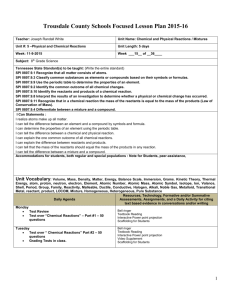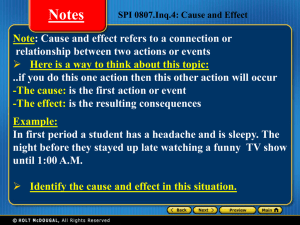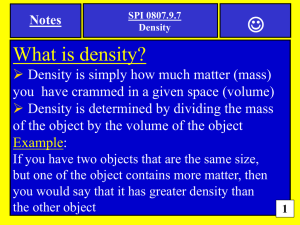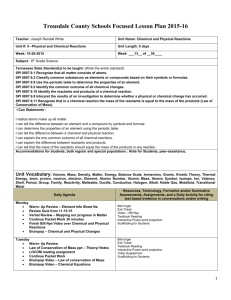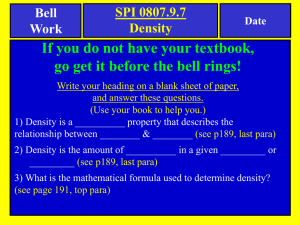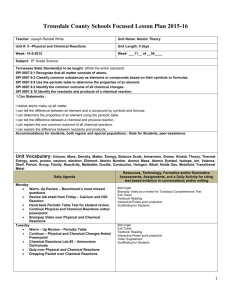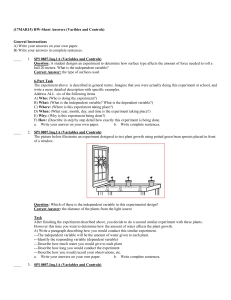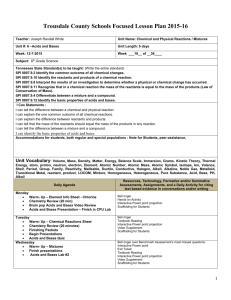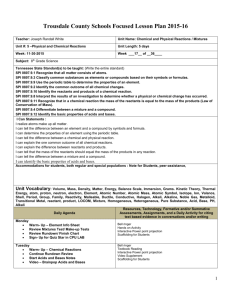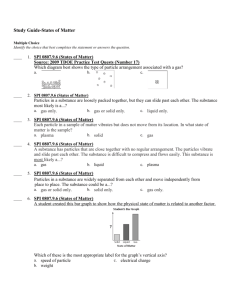Chapter 13 – Chemical Reactions
advertisement
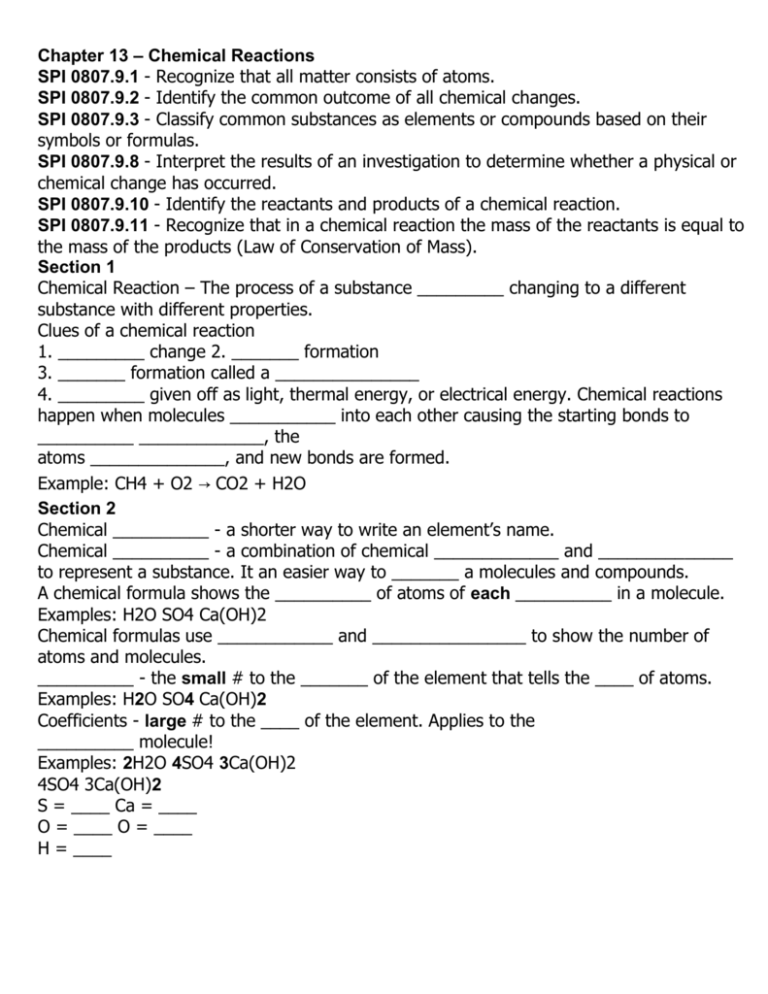
Chapter 13 – Chemical Reactions SPI 0807.9.1 - Recognize that all matter consists of atoms. SPI 0807.9.2 - Identify the common outcome of all chemical changes. SPI 0807.9.3 - Classify common substances as elements or compounds based on their symbols or formulas. SPI 0807.9.8 - Interpret the results of an investigation to determine whether a physical or chemical change has occurred. SPI 0807.9.10 - Identify the reactants and products of a chemical reaction. SPI 0807.9.11 - Recognize that in a chemical reaction the mass of the reactants is equal to the mass of the products (Law of Conservation of Mass). Section 1 Chemical Reaction – The process of a substance _________ changing to a different substance with different properties. Clues of a chemical reaction 1. _________ change 2. _______ formation 3. _______ formation called a _______________ 4. _________ given off as light, thermal energy, or electrical energy. Chemical reactions happen when molecules ___________ into each other causing the starting bonds to __________ _____________, the atoms ______________, and new bonds are formed. Example: CH4 + O2 → CO2 + H2O Section 2 Chemical __________ - a shorter way to write an element’s name. Chemical __________ - a combination of chemical _____________ and ______________ to represent a substance. It an easier way to _______ a molecules and compounds. A chemical formula shows the __________ of atoms of each __________ in a molecule. Examples: H2O SO4 Ca(OH)2 Chemical formulas use ____________ and ________________ to show the number of atoms and molecules. __________ - the small # to the _______ of the element that tells the ____ of atoms. Examples: H2O SO4 Ca(OH)2 Coefficients - large # to the ____ of the element. Applies to the __________ molecule! Examples: 2H2O 4SO4 3Ca(OH)2 4SO4 3Ca(OH)2 S = ____ Ca = ____ O = ____ O = ____ H = ____ Chapter 13 – Chemical Reactions SPI 0807.9.1 - Recognize that all matter consists of atoms. SPI 0807.9.2 - Identify the common outcome of all chemical changes. SPI 0807.9.3 - Classify common substances as elements or compounds based on their symbols or formulas. SPI 0807.9.8 - Interpret the results of an investigation to determine whether a physical or chemical change has occurred. SPI 0807.9.10 - Identify the reactants and products of a chemical reaction. SPI 0807.9.11 - Recognize that in a chemical reaction the mass of the reactants is equal to the mass of the products (Law of Conservation of Mass). Section 1 Chemical Reaction – The process of a substance _________ changing to a different substance with different properties. Clues of a chemical reaction 1. _________ change 2. _______ formation 3. _______ formation called a _______________ 4. _________ given off as light, thermal energy, or electrical energy. Chemical reactions happen when molecules ___________ into each other causing the starting bonds to __________ _____________, the atoms ______________, and new bonds are formed. Example: CH4 + O2 → CO2 + H2O Section 2 Chemical __________ - a shorter way to write an element’s name. Chemical __________ - a combination of chemical _____________ and ______________ to represent a substance. It an easier way to _______ a molecules and compounds. A chemical formula shows the __________ of atoms of each __________ in a molecule. Examples: H2O SO4 Ca(OH)2 Chemical formulas use ____________ and ________________ to show the number of atoms and molecules. __________ - the small # to the _______ of the element that tells the ____ of atoms. Examples: H2O SO4 Ca(OH)2 Coefficients - large # to the ____ of the element. Applies to the __________ molecule! Examples: 2H2O 4SO4 3Ca(OH)2 4SO4 3Ca(OH)2 S = ____ Ca = ____ O = ____ O = ____ H = ____
